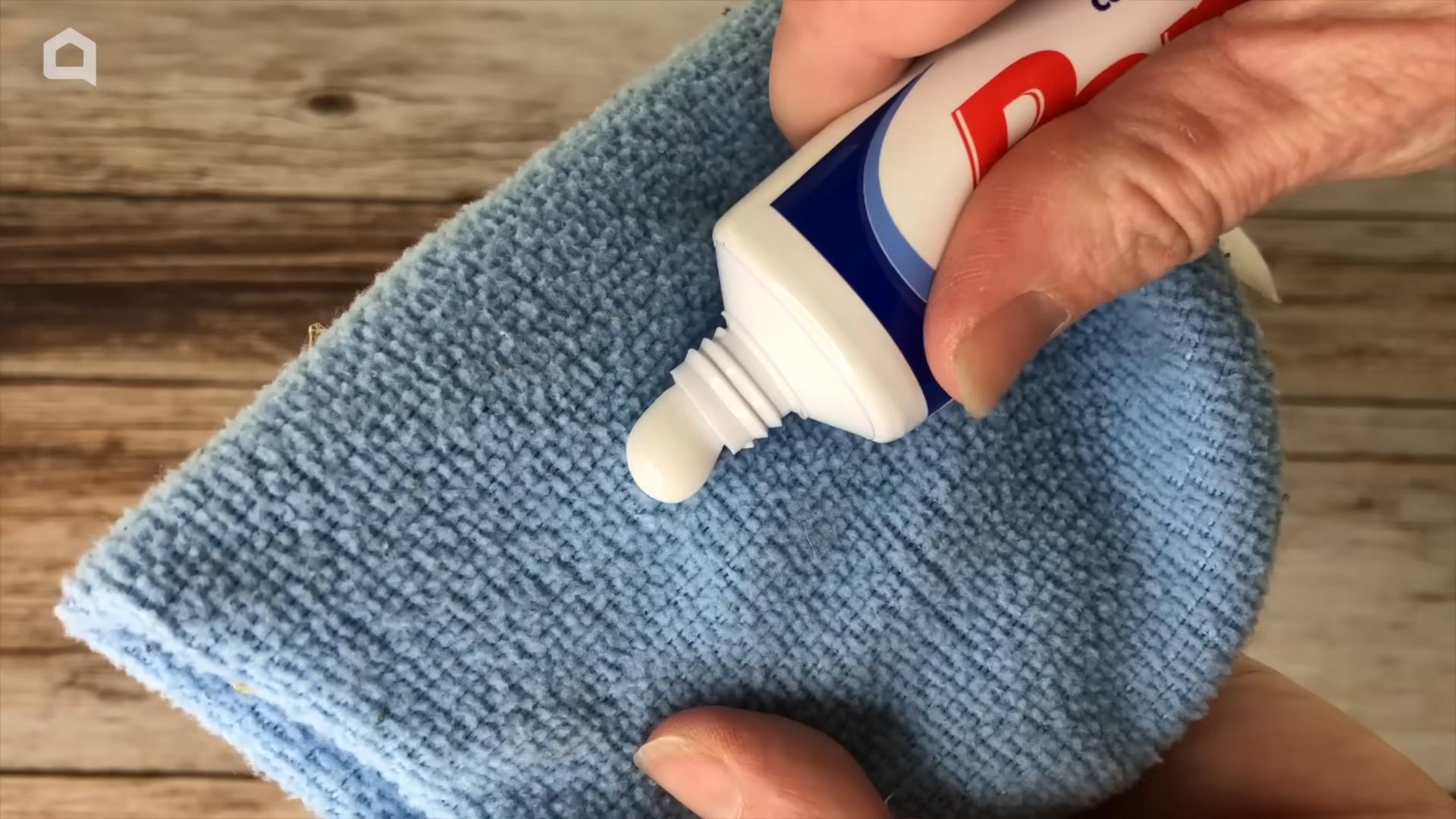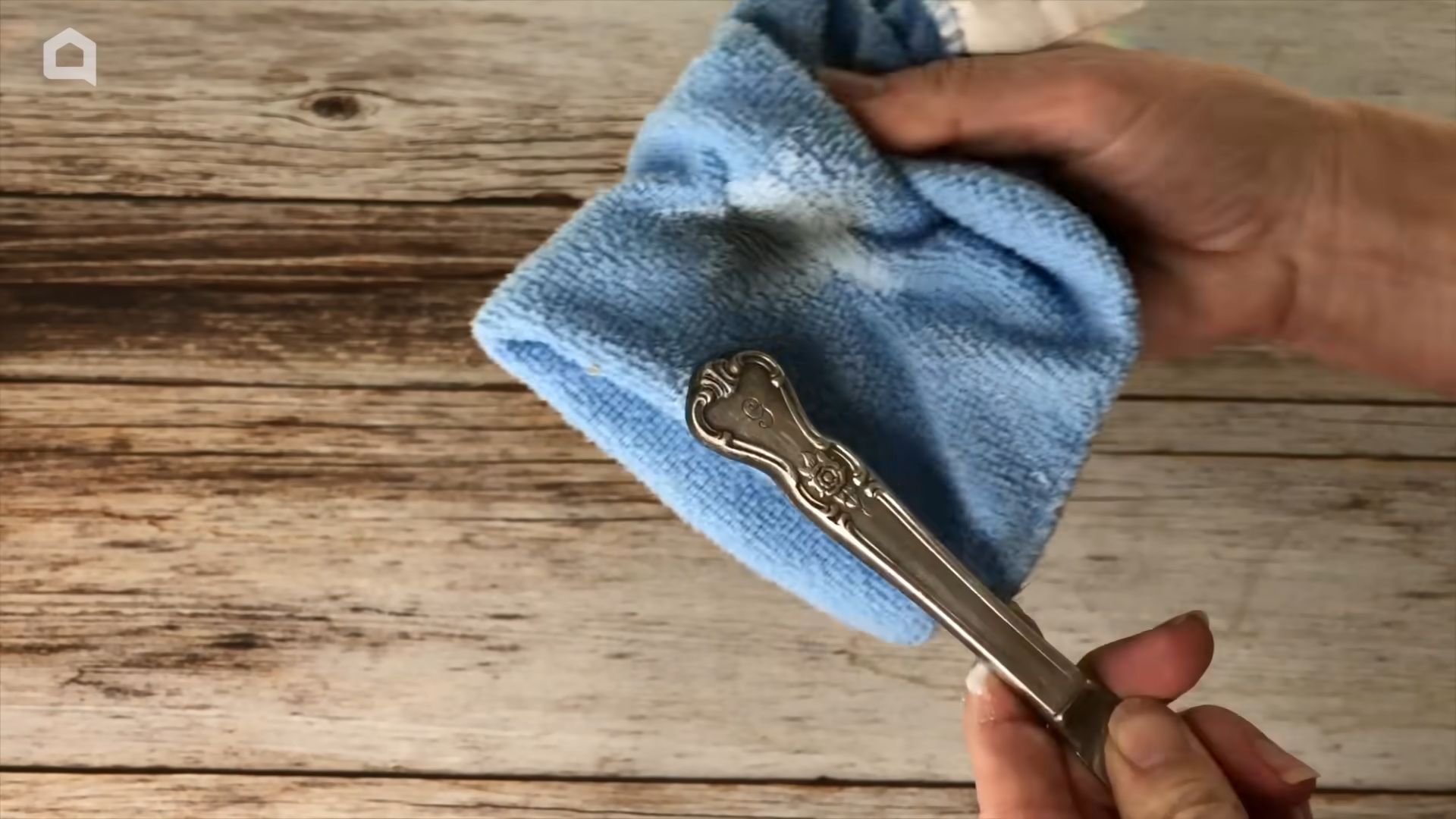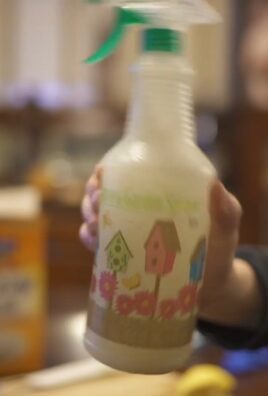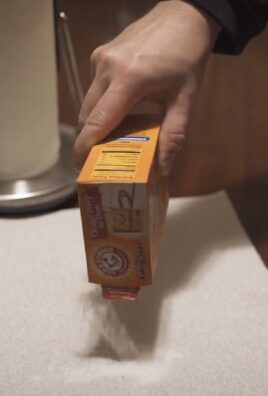Toothpaste life hacks – who knew that humble tube in your bathroom could be a secret weapon for more than just a sparkling smile? I’m always on the lookout for clever DIY solutions, and let me tell you, the versatility of toothpaste has completely blown me away! Forget expensive cleaning products and specialized tools; you probably already have the answer to some of your household woes sitting right next to your toothbrush.
While we might think of toothpaste as a relatively modern invention, the idea of using abrasive substances to clean teeth dates back centuries. Ancient Egyptians used a mixture of powdered pumice and wine vinegar, while the Romans favored crushed bones and oyster shells. Thankfully, our modern toothpaste is a bit more palatable (and effective!). But the principle remains the same: a gentle abrasive combined with other ingredients to clean and polish. It’s this very combination that makes toothpaste life hacks so surprisingly effective.
Why should you care about these DIY tricks? Because life is busy, and we’re all looking for ways to save time and money! From removing stubborn stains to polishing silver, toothpaste can be a surprisingly effective and affordable alternative to commercial products. Plus, it’s a fun way to experiment and discover new uses for everyday items. So, ditch the harsh chemicals and get ready to unlock the hidden potential of your toothpaste. I’m excited to share these simple yet game-changing hacks that will make your life a little bit easier and a whole lot cleaner!

Unlock the Magic: Toothpaste Hacks You Need to Know!
Hey there, fellow DIY enthusiasts! I’m so excited to share some amazing toothpaste hacks that will blow your mind. Forget just brushing your teeth – toothpaste is a surprisingly versatile tool around the house. Get ready to be amazed by these clever uses!
Cleaning Powerhouse: Toothpaste to the Rescue!
Toothpaste isn’t just for pearly whites; it’s a fantastic cleaning agent. The mild abrasives and detergents in toothpaste make it perfect for tackling various household messes.
Silverware Sparkle
Is your silverware looking dull and tarnished? Toothpaste can bring back its shine!
* What you’ll need: Toothpaste (non-gel), soft cloth, water.
* Why it works: The mild abrasives in toothpaste gently polish away tarnish without scratching the silver.
Steps:
1. Apply a small amount of toothpaste to a soft cloth.
2. Gently rub the toothpaste onto the tarnished silverware, focusing on the areas that need the most attention.
3. Rinse the silverware thoroughly with warm water.
4. Dry the silverware completely with a clean, soft cloth.
Shoe Savior
Got scuffs on your leather shoes or dirty white sneakers? Toothpaste to the rescue!
* What you’ll need: Toothpaste (non-gel), old toothbrush or soft cloth, water.
* Why it works: Toothpaste can lift dirt and grime from leather and rubber surfaces.
Steps for Leather Shoes:
1. Apply a small amount of toothpaste to a soft cloth.
2. Gently rub the toothpaste onto the scuffed areas of your leather shoes.
3. Wipe away the toothpaste with a damp cloth.
4. Buff the shoes with a clean, dry cloth.
Steps for White Sneakers:
1. Apply a small amount of toothpaste to an old toothbrush.
2. Scrub the dirty areas of your white sneakers with the toothbrush.
3. Rinse the sneakers thoroughly with water.
4. Let the sneakers air dry.
Ironing Out the Scorch Marks
Accidentally scorched your iron? Don’t worry, toothpaste can help!
* What you’ll need: Toothpaste (non-gel), soft cloth, water.
* Why it works: The mild abrasives in toothpaste can remove the burnt residue from the iron’s soleplate.
Steps:
1. Make sure the iron is unplugged and completely cool.
2. Apply a small amount of toothpaste to a soft cloth.
3. Gently rub the toothpaste onto the scorched areas of the iron’s soleplate.
4. Wipe away the toothpaste with a damp cloth.
5. Turn on the iron to a low setting and iron over an old cloth to remove any remaining residue.
Chrome Cleaner Extraordinaire
Bring back the shine to your chrome fixtures with toothpaste!
* What you’ll need: Toothpaste (non-gel), soft cloth, water.
* Why it works: Toothpaste can remove water spots and grime from chrome surfaces.
Steps:
1. Apply a small amount of toothpaste to a soft cloth.
2. Rub the toothpaste onto the chrome fixtures, focusing on areas with water spots or grime.
3. Rinse the fixtures thoroughly with water.
4. Dry the fixtures with a clean, soft cloth.
Sink Stain Remover
Toothpaste is a great way to remove stains from your sink, especially porcelain sinks.
* What you’ll need: Toothpaste (non-gel), sponge or cloth, water.
* Why it works: The mild abrasives in toothpaste can lift stains without damaging the sink’s surface.
Steps:
1. Apply a generous amount of toothpaste to the stained areas of the sink.
2. Let the toothpaste sit for a few minutes.
3. Scrub the stained areas with a sponge or cloth.
4. Rinse the sink thoroughly with water.
Beauty Boosters: Toothpaste for Skin and Nails
Believe it or not, toothpaste can also be used for some beauty hacks! However, use these with caution and always test on a small area first, as toothpaste can be drying and irritating for some skin types.
Pimple Patrol
This is probably the most well-known toothpaste hack!
* What you’ll need: Toothpaste (non-gel, plain white), cotton swab.
* Why it works: Toothpaste can help dry out pimples and reduce inflammation.
Steps:
1. Cleanse your face thoroughly.
2. Using a cotton swab, apply a small amount of toothpaste directly to the pimple.
3. Leave the toothpaste on overnight.
4. In the morning, rinse the toothpaste off with water.
Important Note: Only use this on occasional pimples. Avoid using it on sensitive skin or on large areas of your face.
Nail Brightener
Give your nails a quick brightening boost with toothpaste!
* What you’ll need: Toothpaste (non-gel), old toothbrush, water.
* Why it works: Toothpaste can help remove stains and discoloration from your nails.
Steps:
1. Apply a small amount of toothpaste to an old toothbrush.
2. Gently scrub your nails with the toothbrush.
3. Rinse your nails thoroughly with water.
4. Moisturize your hands and nails.
Odor Eliminator: Freshen Up Your Life
Toothpaste can also help eliminate unwanted odors.
Garlic and Onion Hand Wash
Get rid of lingering garlic or onion smells on your hands with toothpaste!
* What you’ll need: Toothpaste (any kind), water.
* Why it works: The ingredients in toothpaste can neutralize odor-causing compounds.
Steps:
1. Wet your hands with water.
2. Apply a small amount of toothpaste to your hands.
3. Rub your hands together thoroughly, as if you were washing them with soap.
4. Rinse your hands thoroughly with water.
Baby Bottle Deodorizer
Remove lingering milk smells from baby bottles with toothpaste.
* What you’ll need: Toothpaste (non-gel, fluoride-free), bottle brush, water.
* Why it works: Toothpaste can neutralize the odor-causing bacteria in baby bottles.
Steps:
1. Apply a small amount of toothpaste to a bottle brush.
2. Scrub the inside of the baby bottle with the bottle brush.
3. Rinse the bottle thoroughly with water.
4. Sterilize the bottle as usual.
Important Note: Make sure to use a fluoride-free toothpaste to avoid any potential harm to the baby.
Other Clever Uses: Beyond the Basics
Here are a few more unexpected ways to use toothpaste:
Phone Screen Scratch Remover (Use with Extreme Caution!)
This is a controversial one, and I recommend trying it on an old phone screen first to see if it works for you.
* What you’ll need: Toothpaste (non-gel, plain white), soft cloth, water.
* Why it *might* work: The very fine abrasives *might* help buff out minor scratches. However, it can also make scratches worse, so proceed with extreme caution!
Steps:
1. Apply a very small amount of toothpaste to a soft cloth.
2. Gently rub the toothpaste onto the scratched area of the phone screen in a circular motion.
3. Wipe away the toothpaste with a damp cloth.
4. Dry the screen with a clean, soft cloth.
Important Note: This is a risky hack and may not work. It’s best to use a screen protector to prevent scratches in the first place.
Gum Remover
Stuck gum on your shoe or furniture? Toothpaste can help!
* What you’ll need: Toothpaste (any kind), old toothbrush or butter knife.
* Why it works: Toothpaste can help harden the gum, making it easier to remove.
Steps:
1. Apply a generous amount of toothpaste to the gum.
2. Let the toothpaste sit for a few minutes.
3. Use an old toothbrush or butter knife to gently scrape away the gum.
4. Clean the area with soap and water.
Piano Key Cleaner
Keep your piano keys looking pristine with toothpaste.
* What you’ll need: Toothpaste (non-gel), soft cloth, water.
* Why it works: Toothpaste can remove dirt and grime from piano keys without damaging them.
Steps:
1. Apply a small amount of toothpaste to a soft cloth.
2. Gently wipe the piano keys with the cloth.
3. Wipe away

Conclusion
So, there you have it! This deep dive into toothpaste life hacks has hopefully opened your eyes to the incredible versatility of that humble tube sitting in your bathroom. It’s no longer just about pearly whites; it’s about unlocking a world of cleaning, polishing, and even beauty solutions right at your fingertips.
Why is this a must-try? Because it’s economical, readily available, and surprisingly effective. Think about it: you’re already buying toothpaste. Why not leverage its unique properties to tackle other household challenges? You’ll save money on specialized cleaning products, reduce clutter, and discover a newfound appreciation for this everyday essential.
But the real magic lies in the experimentation. Don’t be afraid to tweak these toothpaste life hacks to suit your specific needs. For instance, if you’re dealing with particularly stubborn tarnish on silver, try using a whitening toothpaste with a slightly more abrasive texture. Or, if you’re cleaning delicate surfaces, opt for a gel toothpaste to minimize the risk of scratching.
Here are a few suggestions and variations to get you started:
* For Leather Scuffs: Gently rub a small amount of non-gel toothpaste onto the scuff mark using a soft cloth. Wipe away the excess with a damp cloth and buff dry.
* For Cleaning Sneakers: Use an old toothbrush to apply toothpaste to the rubber soles and sidewalls of your sneakers. Scrub gently and rinse thoroughly.
* For Removing Crayon Marks: Apply toothpaste to the crayon marks on walls or furniture. Let it sit for a few minutes, then wipe away with a damp cloth.
* For Defogging Mirrors: Spread a thin layer of toothpaste on your bathroom mirror, let it dry completely, and then wipe it off with a clean cloth. This will help prevent fogging after a hot shower.
* For Soothing Insect Bites: Apply a small dab of toothpaste to the insect bite to help relieve itching and inflammation.
The possibilities are truly endless! We encourage you to embrace your inner DIY enthusiast and explore the many ways that toothpaste can simplify your life.
Now, it’s your turn. We’re eager to hear about your experiences with these toothpaste life hacks. Did you discover a new use for toothpaste that we haven’t mentioned? Did you find a particular variation that worked exceptionally well for you? Share your tips, tricks, and stories in the comments below. Let’s create a community of toothpaste aficionados and unlock the full potential of this amazing product together! Your insights could help others discover even more innovative ways to use toothpaste around the house. So, go ahead, give these hacks a try, and let us know what you think. Happy experimenting!
Frequently Asked Questions (FAQ)
Is it safe to use toothpaste on all surfaces?
No, it’s crucial to exercise caution and test toothpaste on an inconspicuous area before applying it to the entire surface. Toothpaste, especially whitening varieties, can be mildly abrasive. Avoid using it on delicate or easily scratched materials like certain types of plastic, painted surfaces, or polished wood without testing first. Always opt for a gel toothpaste for more delicate surfaces. If you’re unsure, consult the manufacturer’s instructions for the item you’re cleaning.
What type of toothpaste works best for these hacks?
The best type of toothpaste depends on the specific task. For general cleaning and polishing, a standard, non-gel toothpaste is usually sufficient. For removing stubborn stains or tarnish, a whitening toothpaste with a slightly more abrasive texture may be more effective. However, for delicate surfaces, a gel toothpaste is recommended to minimize the risk of scratching. Avoid using toothpaste with added ingredients like glitter or large abrasive particles, as these can damage surfaces.
Can I use toothpaste to remove scratches from my phone screen?
While some people claim that toothpaste can remove minor scratches from phone screens, it’s generally not recommended. Toothpaste can be too abrasive and may actually worsen the scratches or damage the screen’s coating. There are specialized screen repair kits and professional services that are better suited for this task. If you’re considering using toothpaste, proceed with extreme caution and test it on a small, inconspicuous area first.
How do I remove toothpaste residue after cleaning?
After applying toothpaste to a surface, it’s essential to remove all traces of residue. Use a clean, damp cloth to wipe away the toothpaste, rinsing the cloth frequently. For hard-to-reach areas, use a cotton swab or a soft-bristled brush. Ensure that the surface is completely dry after cleaning to prevent water spots or streaks.
Is it safe to use toothpaste on my skin for acne or blemishes?
While toothpaste has been a popular home remedy for acne, dermatologists generally advise against it. Toothpaste can be too drying and irritating for the skin, potentially leading to redness, inflammation, and even chemical burns. There are many over-the-counter and prescription acne treatments that are specifically formulated for the skin and are much safer and more effective. If you’re struggling with acne, consult a dermatologist for personalized advice and treatment options.
Can I use toothpaste to clean jewelry?
Yes, toothpaste can be used to clean certain types of jewelry, particularly silver and gold. However, avoid using it on delicate gemstones or pearls, as it can scratch or damage them. Apply a small amount of non-gel toothpaste to the jewelry using a soft cloth or toothbrush. Gently rub the toothpaste onto the surface, paying attention to any tarnished areas. Rinse thoroughly with water and dry with a clean cloth.
How often can I use these toothpaste life hacks?
The frequency of using these hacks depends on the specific application and the surface you’re cleaning. For general cleaning tasks, such as cleaning sneakers or removing crayon marks, you can use toothpaste as needed. However, for more delicate surfaces or applications, such as cleaning jewelry or removing scratches, it’s best to use toothpaste sparingly and only when necessary to avoid damage.
Are there any surfaces I should absolutely avoid cleaning with toothpaste?
Yes, there are certain surfaces that you should avoid cleaning with toothpaste altogether. These include:
* Painted surfaces: Toothpaste can dull or remove paint.
* Polished wood: Toothpaste can scratch or damage the finish.
* Delicate gemstones and pearls: Toothpaste can scratch or damage these materials.
* Certain plastics: Toothpaste can scratch or discolor some types of plastic.
* Electronic screens: Toothpaste can damage the screen’s coating.
Always err on the side of caution and test toothpaste on an inconspicuous area before applying it to the entire surface.
What are the environmental considerations of using toothpaste for cleaning?
While toothpaste can be a convenient cleaning solution, it’s important to consider its environmental impact. Many toothpastes contain ingredients like triclosan and microbeads, which can be harmful to aquatic life. Look for toothpaste brands that are environmentally friendly and avoid those with potentially harmful ingredients. Consider using alternative cleaning solutions that are more sustainable and less harmful to the environment.
Can I use expired toothpaste for these hacks?
Yes, expired toothpaste can still be used for most of these cleaning and polishing hacks. While the fluoride in expired toothpaste may not be as effective for dental hygiene, the other ingredients will still work for cleaning purposes. This is a great way to repurpose expired toothpaste and prevent it from going to waste.




Leave a Comment